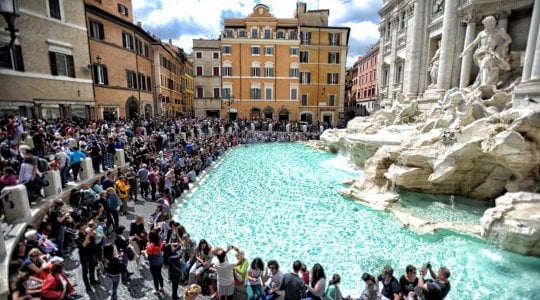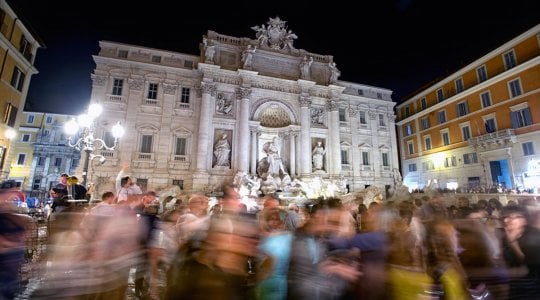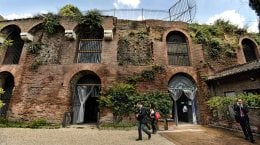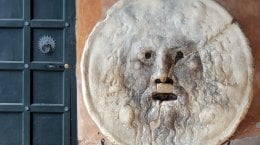Official Rome and Vatican ticket reseller
Trevi Fountain and the other Fountains
It goes without saying that Rome is a city full of history of testimonies dating back to ancient epochs.
That is why it is fair to pay attention to the Trevi Fountain, one of the main monuments of the Capitoline city, as well as all the other historic fountains that can be admired.


It goes without saying that Rome is a city full of history of testimonies dating back to ancient epochs.
That is why it is fair to pay attention to the Trevi Fountain, one of the main monuments of the Capitoline city, as well as all the other historic fountains that can be admired.
The Trevi Fountain is undoubtedly one of the main historical attractions of the city of Rome. Every day thouSt.ds of tourists literally storm the area in which it is located to be able to admire it in all its splendor and imposing majesty. The fountain is very easy to reach because it is located in one of the most central areas of the city, and it is well connected by means of transport. The metro appears to be the most convenient option a tourist can choose: if you are coming from Termini station, for example, you just need to take Line A towards Battistini, get off at Barberini Metro Station and walk just 5 minutes to reach the wonderful Trevi Fountain. Otherwise, you could reach the monument by bus using bus n.85, get off at St. Claudio bus stop on Via del Tritone and walk a little to reach the fountain comfortably.
It should however be emphasized that the origin of this splendid fountain dates back to B.C. 19 when it was the terminal part of the Aqua Virgo aqueduct, according to historical evidence. At that time it was not yet an artistic construction, but it had a very important function for the inhabitants of the area who were able to have water thanks to it.
Indeed, it is necessary to recall that the current appearance of the Trevi Fountain dates back to 1762, the year in which it was completed by the architect Giuseppe Pannini. It was a very complex and arduous work that finally gave the city a monument of world resonance and a place very dear to the Romans themselves.
Despite the fact Agrippa wanted the construction of a fountain available to citizens in this point of the city at first, with the time passing things changed. In fact, in the Middle Ages fountain monitors, known as marescalchi, were imposed, who had the task of verifying that there were no free folk using water.
At that time many people used to fill barrels with water and sell them, which was not allowed by the authorities of the period. What undoubtedly characterizes the Trevi Fountain is the presence of three swimming pools in which water is continuously poured: the central one is the largest, capable of accommodating an abundant volume of water.
Regarding the name, not everyone knows that the Trevi Fountain is so called because it refers to the Tre Vie, or to the three intersecting streets whose cornerstone is itself. It also has great importance from an architectural point of view, providing a series of very specific representations.
The central part of the fountain develops itself as an authentic triumphal arch, with a rather deep niche that shows Corinthian columns at the sides. At the center of it there is a large inscription that recalls the artistic realization of the fountain which was strongly desired by Pope Clement XII, whose effigy is present in the upper part of the fountain itself. To adorn the entire structure of the fountain there are four large statues from the mid-1700s, each of which has its own distinctive symbolism. Looking at the facade of the Trevi Fountain, starting from the left side, we can see the Abundance of Fruits, the Fertility of the Fields, the Gifts of Autumn and the Amenity of the Meadows.
Surely, the statue that anyone can’t help but notice while looking at the Trevi Fountain, not only for its size but also because of its shape, is the statue of Oceano. He is presented while driving his chariot in the form of a large shell: this is pulled by two sea horses with wings, one of which is presented rabidly, while the other is peaceful. To carry them the symbology includes two tritons, one more adult and another younger, which are typical characteristics of the growth of man and his change of nature.
Remaining on the sides, one can also note the statue of Agrippa, which gives its assent to the construction of the aqueduct, and that of the Virgin showing the location of the water source, a symbol of salvation, to the soldiers in battle.
Some directors have also contributed to making the Trevi Fountain even more famous. Thanks to their films, which have literally become epochal, this monument has been shown as an icon not only of Rome, but of the entire Italian peninsula. Just think about the sensual and very famous Anita Ekberg’s bath in the fountain in the film “La Dolce Vita”. In this movie, the beautiful actress takes a bath with her long black dress inside the Trevi Fountain together with Marcello Mastroianni: a scene that has become a masterpiece for the Made in Italy cinema industry. But in the cinematographic field, the Trevi Fountain is also famous due to Totò’s film “Tototruffa”, in which he proclaims himself as the owner of the monument and tries to sell it to an alleged buyer.
Certainly, there is no lack of traditions linked to the Trevi Fountain that have contributed to its great popularity worldwide. The most famous is that you must throw a coin into the fountain as symbol of good luck. This legend was also born thanks to the film “Tre soldi nella Fontana di Trevi” in 1954. It is in this movie, you can learn that by throwing a coin you can make a wish to return to Rome, with two you can find love with an Italian and with three you can get married. According to the tradition, the coin needs to be thrown with your right hand above your left shoulder, so that your desire becomes reality.
However, it should be remembered that Rome is a city full of historic fountains behind which many myths and particular traditions are hidden. First of all, they have ancient origins as water was fundamental for the Romans not only for the organism, but also, for example, for housework or architecture. One of the most famous fountains is the Barcaccia by Bernini, which is located in Piazza di Spagna, one of the most picturesque spots in Rome.
It represents a boat that was found there during one of the historic floods of the Tiber. The fountain has been recently meticulously restored after being damaged by some Dutch fans a few years ago.
There is also the Fountain of the Four Rivers which is one of the dearest to Roman citizens, mainly because it represents the four most important rivers in the world, as the name implies, namely the Nile, the Rio della Plata, the Danube and the Ganges.
Check the stops of the Open Top Bus Vatican & Rome on the map in order to find the closest stop to the attraction you are interested in visiting;
Alternatively, consult https://www.google.com/maps for information on public transport.
Remember: with Omnia 72h you have access to all means of public transport of Rome.




